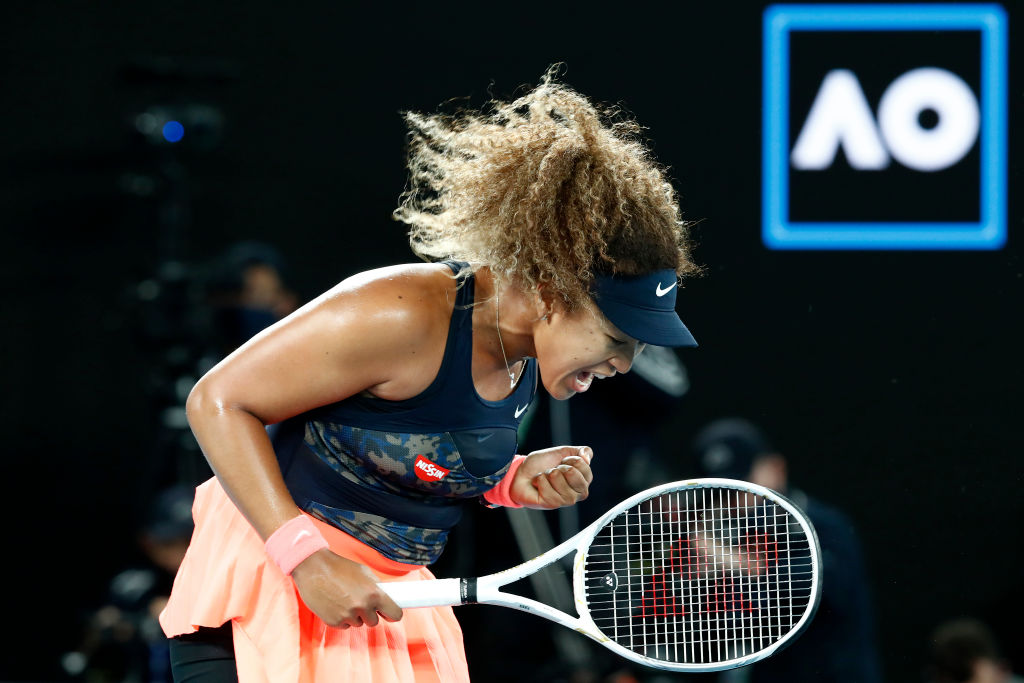There was a time when having a nervous breakdown on a tennis court was called a hissy fit. Watch John McEnroe shouting at the umpire during the 1981 Wimbledon Men’s Singles first round match against Tom Gullikson for the masterclass. Strutting over to the umpire like an angry bird, his trademark headband doing anything but containing his mop, McEnroe splutters the immortal ‘you cannot be serious’ riposte accompanied by fabulously energetic arm movements before returning to the baseline and serving out a double fault. In the gladiatorial arena that is the tennis court, McEnroe knew that repression wouldn’t win him the match. Did he look bonkers? Yes, but he didn’t care. Instead, he channeled his mental anguish to win him the match, and later, the tournament. A star was born, albeit a highly strung one.
These days, things are rather different. World number two Naomi Osaka’s decision to withdraw from the French Open last week citing her mental wellbeing as the reason, shows us just how different. It began when Osaka refused to take part in the mandatory press conferences for all players. She was fined and continued to play in the tournament. Five days later, amid a media frenzy in which the sport establishment called her spoilt and entitled, Osaka formally withdrew from play, issuing a statement in which she expressed her desire not to be a ‘distraction’ to the other players and speaking of her mental unrest when faced with the press. This week she announced her withdrawal from her upcoming Berlin tournament, casting doubts on whether she will compete at Wimbledon. In a world of constant news flow and Instagram click bait, it isn’t just on-court drama that spectators consume but the lives of tennis players off the court too.
Post-match analysis is as much of a spectator sport as the game itself. Take Rafael Nadal who rather witheringly said in a recent interview that his rival Novak Djokovic was ‘more obsessed’ with winning titles than he was. Throwing a McEnroe style tantrum in front of the public is no longer the efficient way of either winning matches, or, exhibiting to the world the pressures you face as a multimillion-dollar sports star. Through the media, professionals can compete off court as well as on and spectators are as interested in the psyche of their favourite players as they are the results.
Our interest in players’ temperaments is nothing new. Watching tennis players mentally unravel as they slog out five-set matches on court in front of the world’s media, in silence, alone, and at the mercy of a partisan crowd should not be what tennis is about. But anyone who says that isn’t why they tune in would be lying. My father, who refused to leave the house ever during Wimbledon fortnight, used to take particular pleasure in watching Monica Seles grunt her way through her matches as if every groan was a sure prelude to her lying on court weeping in a fit of female hysteria. The fact that Steffi Graf always looked so composed as she skipped her way to the women’s title meant he often fell asleep watching her. Osaka’s decision to keep her struggles off camera is a noble – if doomed – attempt to reject this side of the game. If that is more boring, then perhaps Greek tragedy, and not tennis, is for you.
Of course, for a player as conscious of her own brand as Osaka, this is also about the reign of the individual. Press conferences are notoriously reductive: Maria Sharapova was often reduced to a ‘sex symbol’, Andre Agassi was routinely asked about his love life, and Osaka has spoken about her dismay in being treated as an exotic Japanese object. Osaka’s championing of the Black Lives Matter protests and her use of her fame as a political platform speaks to the way in which players are, despite their protestations, complicit in the spectacle of self and racket. Serena Williams, no stranger to an on-court meltdown, has broadened her identity through social media into much more than a tennis player: she is a mother, fashion icon and campaigner. If spectators expect more than simply the cold, hard geometry of a tennis court then players have to ask themselves uncomfortable questions about why that might be.
Tennis is famously punishing on the psyche, even without the complex dynamics that come with being a private person in a very public position, or an ambitious athlete who, on even her bad days, is expected to win every match. By refusing to take part in the press conferences, Naomi Osaka has, ironically, given the public more than she would ever have been expected to reveal in a post-match interview. Whether her decision will tip protocol away from press intrusion in the future is moot. Her actions show us that the game between spectators and players rumbles on, regardless of whether the professionals want to play.






Comments